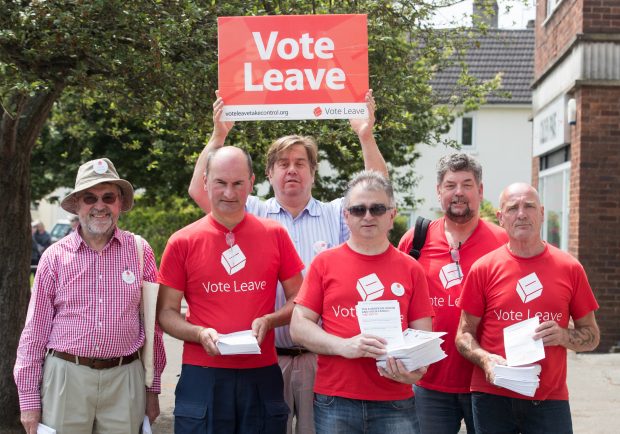In the months before the referendum, the ‘Leave’ campaign’s press operation had been in control of the campaign. But in the last three weeks, the baton was passed over to the ground campaign to get us over the line.
Running a good ground campaign relies on three key phases. The first two of these – identification and motivation – are largely self-explanatory. Find target voters then work out how to enthuse them. The final stage is about getting out the vote – making sure people actually go to the polling station. This means ensuring your supporters vote in greater numbers than the other side (what’s known as ‘differential turnout’). The key to the whole process is identifying supporters – collecting what’s called Voting Intention data. This is gathered by local volunteers knocking on doors and asking. Without that data, you cannot run a campaign that targets your supporters.
In order to harness these numbers, the right software is crucial. For Vote Leave, this took the form of our own canvassing software called VICS (Voter Intention Collection System). This online platform, built by Stein Fletcher, was easy to use and allowed our ground campaigners to run local canvassing sessions. This platform was then loaded with what we called ‘the model’ – a predictive algorithm that made an educated guess at where to find Eurosceptic voters. This generated a star-rating, giving an idea of the likely proportion of ‘Leave’ voters for each street, using numbers from European elections in 2014 and the general election. We could then funnel our activists to our best areas.
So, with some three weeks to go before the referendum, we had collected 600,000 voting intentions. Not bad considering this was within seven weeks of being designated as the official ‘Leave’ campaign, with an organisation built from scratch. It was, however, only around 15 per cent of the total number of voters we needed our ground campaign to be able to contact in the final ‘Get Out The Vote’ phase of the campaign. Here was the really clever bit: all of the data we did manage to collect was captured in VICS and used to refine the algorithm further. Reports from the field indicated that streets now identified as top-rated had improved from being 65 per cent – for ‘Leave’ to nearly 75 per cent.
This high percentage gave us the confidence to use the model to simply fill in the blanks, marking millions of electors as ‘Leave’ voters despite having never contacted them, using the predictive algorithm. On polling day, we sent our activists to knock on doors of people we had probably not spoken to, trusting that three times out of four it would be a ‘Leave’ voter who answered. To do this, we combined the predicted data with the network Vote Leave had built – a network made up of around 12,000 activists, organised by hundreds of volunteer constituency co-ordinators who were connected to HQ via 13 Regional Directors and supported by two dozen Regional Assistants. Credit is due to Stephen Parkinson and Nick Varley, without whom our ground campaign would not have looked anything like the formidable, data-driven machine it had become.
By contrast, when ConservativesIn’s plans for polling day operations in 90 key seats were leaked to us, we thought their plans were too bad to be true. Remain had chosen a ‘high-visibility’, un-targeted approach for their ground campaign. This involved railway station leafleting at 6am, followed by street stalls and ‘high street leafleting’ throughout the day before returning to station activity between 5pm and 7pm. Such scattergun campaigning was ineffective when you consider that the average ‘Leave’ vote in these constituencies was 45 per cent. So Remain’s activists had a 55 per cent chance of contacting a supporter on polling day; Vote Leave’s ground campaigners had a 75 per cent chance. ‘Remains’’ ‘high visibility’ campaigning may have been enough to fool some into thinking ‘Remain’ were more active, but ‘Leave’ was by far the more effective.
The three-phase approach works as effectively for a council by-election as it does for a national referendum. Vote Leave’s approach to collecting voting intention data means we’ve now had the UK’s first big data ‘Get Out The Vote’ operation – and it’s unlikely to be the last.
Tom Waterhouse was deputy head of the ground campaign for Vote Leave






Comments